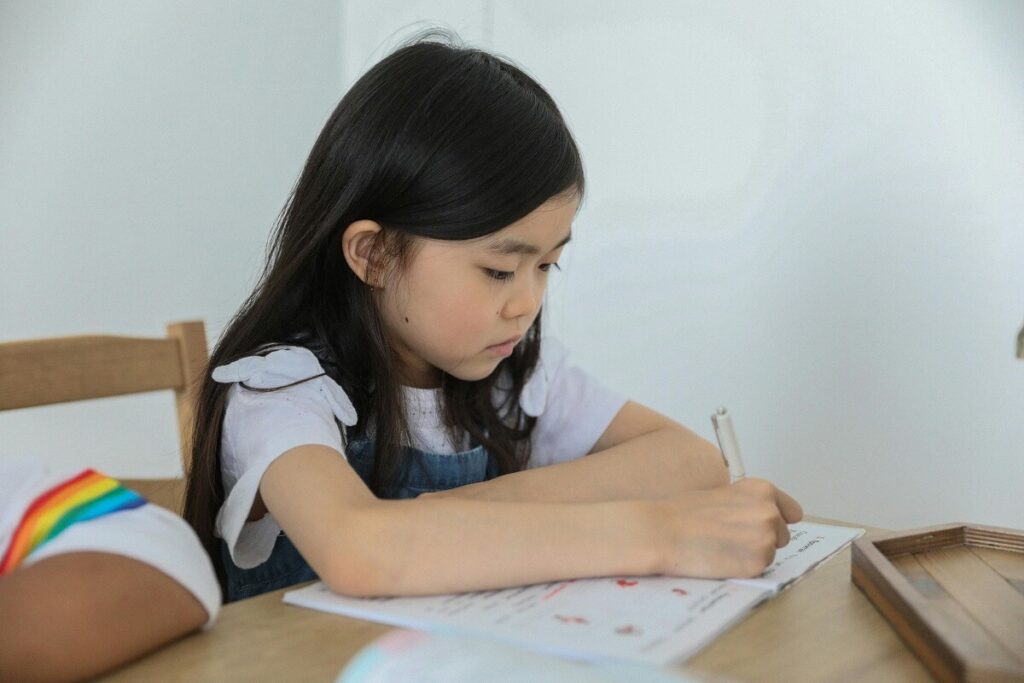
Many parents champion the Montessori method because it fosters independent learning and allows children to develop their natural curiosity.
Although Montessori classrooms are great, it’s important to note that the learning doesn’t stop once a child leaves for the day. Creating a prepared environment in the home is crucial in allowing children to freely explore their evolving interests.
Many people love the idea of creating a Montessori-style learning environment at home but aren’t quite sure where to start. Fortunately, you can keep the learning going outside the classroom more easily than you think. Discover four ideas to help you get started.
1. Create a Prepared Environment
Montessori classrooms feature a prepared environment where things are purposeful and have a distinct place. Kindergarten-aged children who walk into the Montessori environment feel welcomed and are eager to explore.
At home, this can mean having size-appropriate furniture that allows your child to move through and interact with a room easily and without too much help from an adult.
Consider placing learning materials on low shelves and providing a designated space for specific activities, such as reading and sensory play. This mimics the setup of a Montessori classroom and contributes to a calm, organized environment.
2. Focus on Practical Life Skills
Practical life activities play an important role in the Montessori kindergarten classroom and are quite easy to recreate at home. You can encourage practical learning by assigning developmentally appropriate chores that allow a child to contribute to the household, including folding laundry, setting and clearing the table, or caring for plants.
You can also help children learn to care for themselves. This means promoting activities like going to the bathroom and washing their hands on their own, tying their own shoes, and even packing a lunch for school the next day.
3. Foster Opportunities for Collaboration
Montessori kindergarten children learn to embody and extend grace and courtesy in their interactions with each other. Fostering opportunities for family members to collaborate and show good manners to one another helps you cultivate this skill in your home.
Consider bringing children in on decision-making opportunities in the home through family meetings or discussions.
Also, allow your children to participate in team-oriented household activities like cooking and gardening. This will help children learn to patiently and actively listen to others and share ideas with respect, empathy, and kindness.
4. Become a Guide for Your Child
In Montessori kindergarten environments, adults don’t act as teachers who constantly disseminate information to students. Instead, they become guides who allow children to engage in uninterrupted, self-directed learning. Fortunately, you can do this at home with your children.
Once you prepare the environment for them, take a step back and observe, noticing what they are interested in and drawn to. Provide materials that meet those interests and allow them to interact with those materials as they choose.
Instead of trying to teach the right behavior, focus on modeling it for them so they understand why it’s important and how their behavior affects others.
Foster the Right Skills Both in the Classroom and at Home
The Montessori method encompasses not just a way of teaching but also a way of life. It applies to both the classroom and home environment. Fostering lifelong learning and growth requires creating harmony between the two and ensuring children have opportunities to explore no matter where they are.
If you’re looking for an effective educational environment that mimics the one you’ve created in your home, Flagstaff Montessori’s Westside Campus can provide it.
We offer a Montessori kindergarten program that focuses on five distinct areas of growth — sensorial, cultural, mathematics, language, and practical life. Contact us to learn more about how a Montessori education can help your child develop personally and academically.
